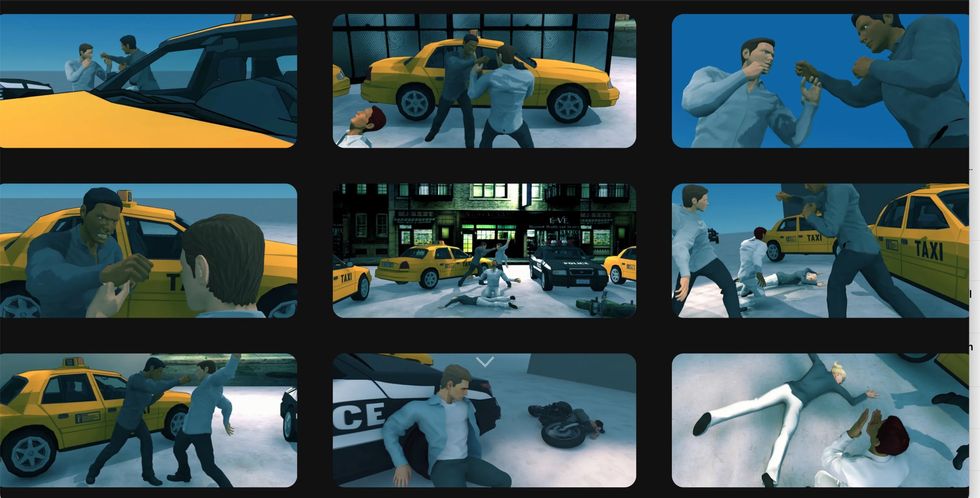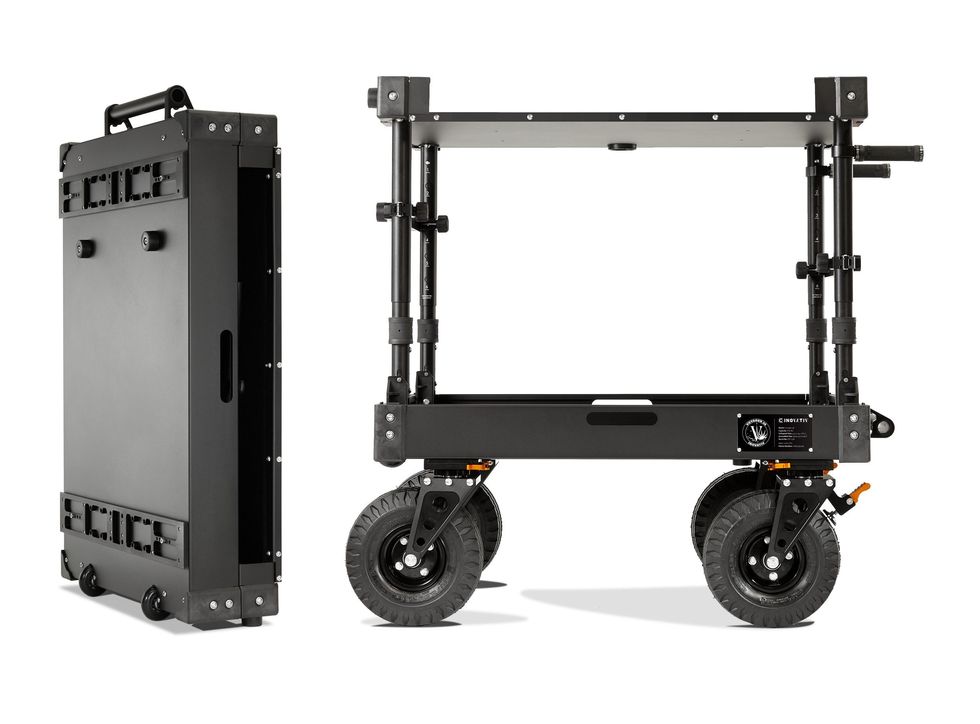'Eating Animals': Why Director Christopher Quinn Approaches Doc Filmmaking as a Living Process
Christopher Quinn built the narrative of the Natalie Portman-produced documentary over five years.
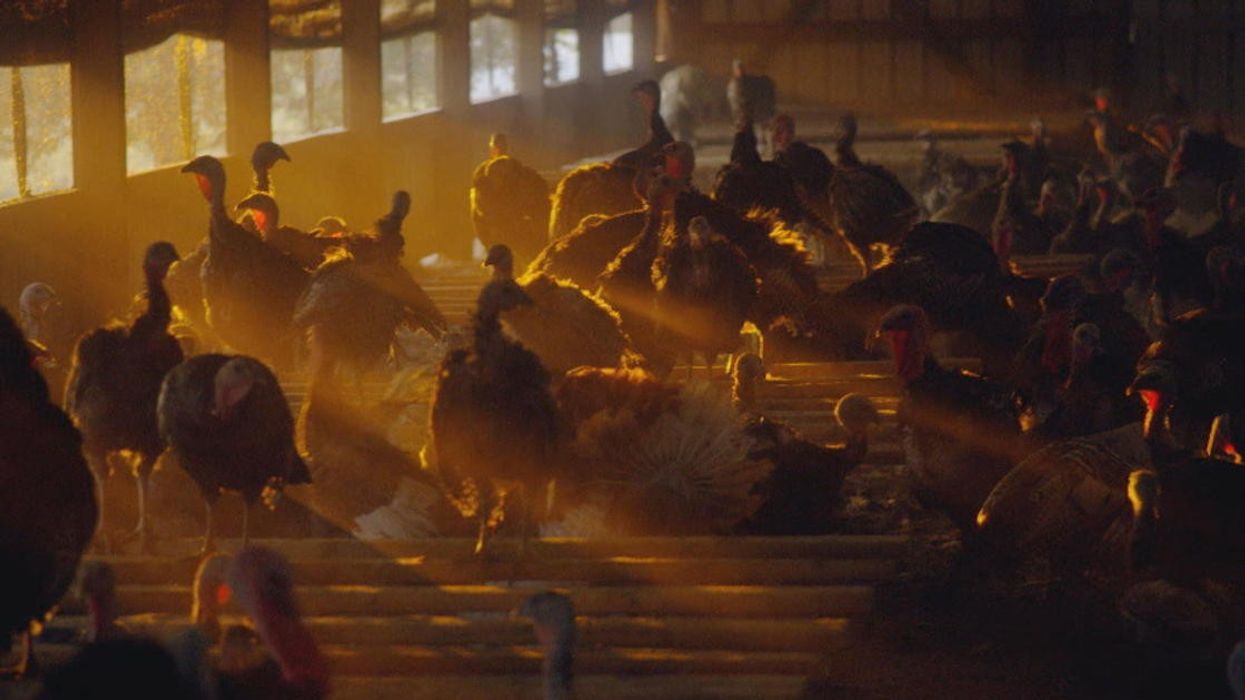
Outside of learning about the changes that the rise of factory farming has caused in the food industry, and finding out about the plight of independent farmers in the wake of those changes, one could learn a lot about filmmaking by watching Christopher Quinn's Eating Animals, a documentary currently in theaters. You could learn about building a narrative, sustaining it, and then distracting from it productively, where necessary.
Based on Jonathan Safran Foer's book of the same name and narrated by Natalie Portman (who also co-produced), the film is a visually and emotionally moving story of the gradual erosion of independent, small farming by industrial methods which usually involve physical mistreatment of animals, both through cramped, unclean conditions and through the administering of antibiotics to prevent sickness from those conditions. You could be an avowed meat-eater, see the film, and remain one afterwards, but it would be a rare viewer who was not, at the very least, mentally nudged by the evidence and the story the film presents. It's an emotional story, but it's also a factual story.
No Film School recently contacted Quinn, whose other films include God Grew Tired of Us (about the lost boys of Sudan), to discuss his filmmaking process and his approach to the film's topic.
No Film School: What was the quality of your interactions with your subjects as you were making this film?
Christopher Quinn: It took a while to find anybody who was linked to large corporations to talk to us—it’s just not something you want to do, because your livelihood could be affected, which is what happened with Craig Watts. We were going to go long and wait for something like that to happen, and we put feelers out, and eventually, Craig Watts came to us through Compassion in World Farming, and we were able to strike up a conversation. He opened his barn to Nicholas Kristof from the New York Times and a number of other people, but I don’t think anybody went as long as we did.
One of the impacts was seeing the Watts family feeling the pain of blowing the whistle on a system that was, as Craig puts it, a treadmill of debt, and the decision to expose how the tournament system works, and how the farmers are ultimately the ones who end up getting screwed by the system. I spent time with Jim Keen, who worked at USMARC, the animal research center, and it took a lot of time to gain trust and mutual admiration, but that was the way in, as opposed to getting some sound bites and moving on. The really important thing was watching how whistleblowing can be a really tough thing to do.
"I like the longitudinal approach, feeling the weight of time."
NFS: How long did the film take to make, from start to finish?
Quinn: If you add in financing, it’s a lot longer, but really, it was over the course of five years, during which time I was doing other projects, but I like the longitudinal approach, feeling the weight of time. That’s, of course, one of the great things about cinema, that you can make leaps in time. That’s how I make my films; I prefer to experience them over a long period of time, rather than doing a survey of an idea or topic. And also, having individuals play out their narrative lines through the film, running the course of several years as opposed to just a month or two—that’s just a preference I have, in the films that I watch.
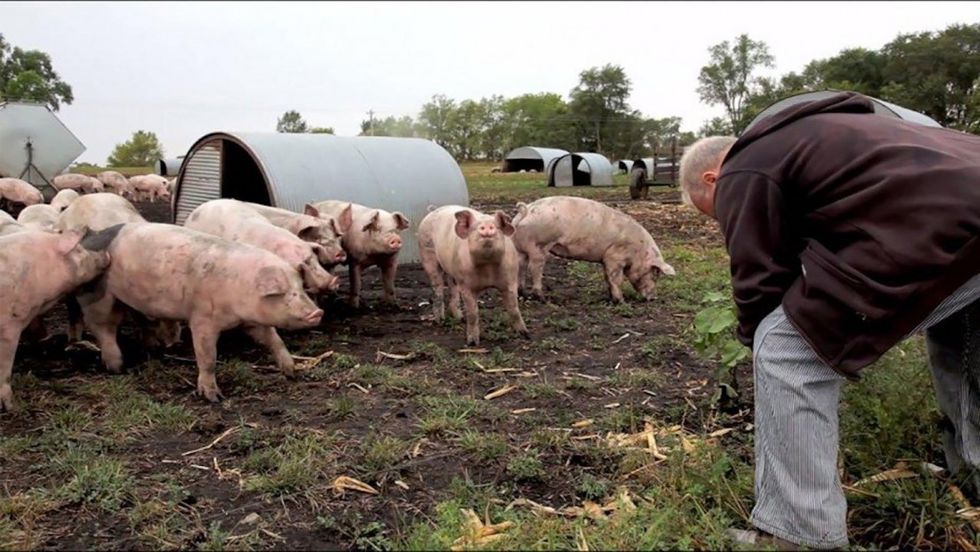
NFS: As you were making the film, how did you shape the narrative structure?
Quinn: Well, the book was a survey, and it’s good in its own right—it’s also a quasi-memoir, about Jonathan’s story, a multigenerational tale of his family, with his grandmother near-starving to death in a concentration camp and then coming out, and the way that related generationally down the line. So, the book is very different.
Natalie [Portman] and Jonathan [Safran-Foer] came to me because of a film of mine that they liked about Sudanese refugees coming to America over the course of time, which took four years to make. They felt that we should stay close to the individuals and tell stories through their eyes as they’re toiling in the soil, so you get a bigger picture of the long shadow that corporate farming casts on these seemingly independent communities. That’s a standard narrative, told since the days of Steinbeck, and an ongoing issue around the world.
But there was something there, also, about hanging in the ambiguities. The film doesn’t take a critical stance, aside from the fact that these one percent of farmers that are left matter to us. But the idea was also to keep it as open as possible, so that individuals could draw their own conclusions. The narration itself was more of a kind of subjective view, looking at the things we’d come across as we filmed over the years, such as how ineffectual the USDA is, for example, when it comes to representing individual farmers. Those moments are interlaced throughout the film and give it kind of a skeletal structure to help the viewer move into the various places that the tone goes. It’s a really fraught and expansive story—I had 400 hours of footage that I cut into 90 minutes. It’s certainly a hard story to tell in an hour and a half, but the idea of a subject or character guiding you, I always think, is essential for this type of documentary and for good filmmaking.
"A subject or character guiding you is essential for this type of documentary and for good filmmaking."
NFS: To what extent were Jonathan Safran Foer and Natalie Portman involved in the filmmaking process?
Quinn: It just depended. I had complete creative autonomy. That’s what they wanted and that’s what I wanted, and that worked very well. We did, early on, get together and talk extensively about what the film could be, what the film should be, but you know, with documentary filmmaking, oftentimes your pre-concepts get blown out of the water.
For instance, Craig Watts was not even on our radar when we started, nor was Jim Keen, and these ideas of trying to parse and figure everything out, determine what would make the story whole, kind of came in and out. But I always had Jonathan and Natalie’s ear, and that was a great sounding board. I would go off and then circle back and talk with them; we were a very supportive and collaborative team, which I think is still the case as we roll out the film—we’ve spent a lot of time together doing q and a’s, and it’s been a really great experience.
NFS: How did you keep track of it all the information you gathered? How did you assemble it all?
Quinn: Well, you go out and you experience, and then you go back and accumulate, and you review footage, and in that process, you start to articulate specific themes that develop into sequences. It’s an editorial process. But all the writing is in the scene-to-scene that builds the sequences. There was a tremendous amount of footage, and you had to stay on top of it in the edit.
We had an assistant editor all the way through who was organizing and then processing all of that footage. You end up looking at the material, going away, going back to the farmer and asking additional questions, but in that process, you develop confidence enough to script scenes, even though you aren’t actually dictating what people are saying. You’re taking the footage you have from the field, and you’re applying it to write from scene to scene to sequence to build on that. This was kind of an atypical structure in that there’s biographical sequences like the ones about Colonel Sanders and Don Tyson. These were important things for me: how did we get away from ourselves, and when did that happen? In my earliest recall, it was in the '70s, when I was a kid, when cheap, efficient food started to come into its own. So having that historical landmark was important to me. And then I researched and wrote those sketches in, and the question became, how did the system get away from us, as in the sketch on Don Tyson, who vertically integrated our food system? He single-handedly designed this whole new system. So that became another historical eddy in the film that played against the narrative in a powerful way, I like to think. That’s when we started trying to script and then edit and make sense of it so someone could watch it, so there was a fluid narrative taking place.
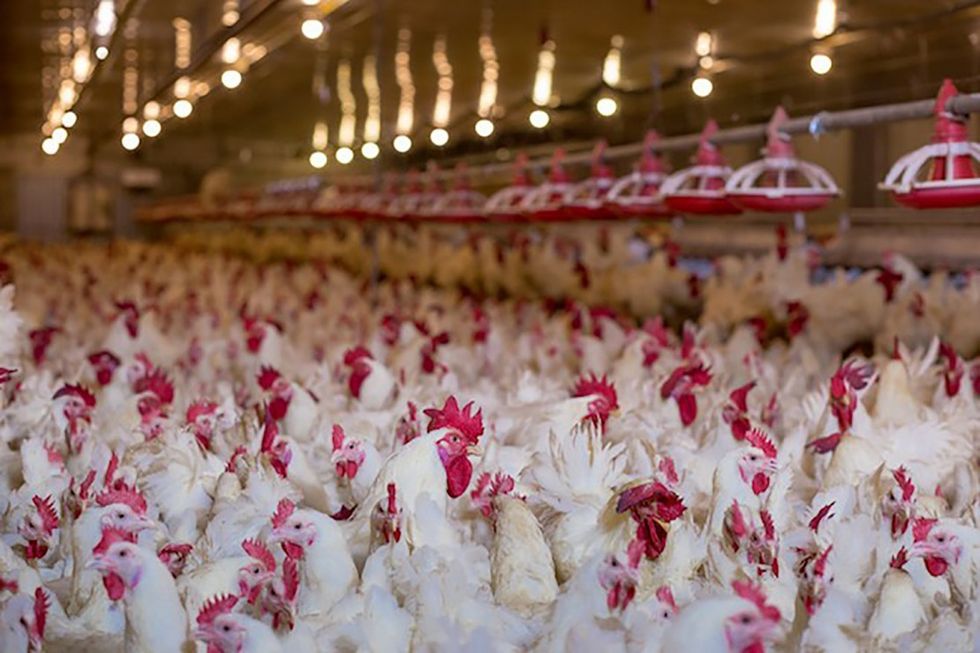
NFS: The visual part of the film is quite strong; it alternates scenes of rolling landscape with scenes of violence—and with scenes like the opening shot of the car lights in the dark, that could be out of a film noir. How was all of that built up and mapped out?
Quinn: I thought about that from the very beginning of our scout. Initially, I went out, before I brought my entire camera crew on, to meet everybody and spend individual time with them. It took many months, because everybody’s from far-flung places around the United States, and during that time, I was taking notes about the pastoral landscape of America. Clearly, within the story of agriculture and factory farms, there was something that got away from us, an unravelling of the American mythos that we’re a patchwork of small farmers who feed a nation. There was something different going on.
But with the allure of being on the road and seeing all that beauty, I knew that I very specifically wanted to find somebody to film it. Mott [Hupfel] and I have worked together before, and he seemed like the perfect guy to do it. I doted over looking for small things that were really beautiful. If we found ourselves in particular places, we made sure to capture that beauty, because that still exists, even if it’s rusting in the farm belt because of the industrial system that’s in place. That to me seemed essential, part of a visual language. And then when you get to some of the more gaggy archival images, of undercover investigations as they’re underway, it felt more like a mimeograph or a copy of what was taking place. I loved jumping from the raw surveillance footage into a more sweeping, cinematic tone, and playing off of it. But that was really informed by being out, crisscrossing the United States of America.
"If we hovered in the ambiguities, it was really to leave room for the viewer to draw his or her own conclusions."
NFS: The film stops just short of telling viewers not to eat meat. You said a little earlier about your reluctance to take a stance—how did your own thinking change while you were making the film?
Quinn: I thought about it a lot, and also my diet changed a lot. When Jonathan and Natalie came to me, I was a meat eater, and I’d like to think I was an educated consumer, but the book itself kind of challenged that for me. In the process of looking under the hood of processed meat and dairy, how could you not move away from it? So in that process, I personally made a decision—most of my meals are plant-based, in the high 90th percentile. So, you’re looking at a radical transformation from beginning to end for me.
But what I didn’t want to do was wag a finger. The moral charge in the book was convincing—what are we doing here, morally and ethically, raising animals this way?I’d like to think that the film parallels this, but I don’t think I’m going to see, in my lifetime, a world where the population doesn’t consume meat or animal products. I think that’s just the way it’s going to be. And so for me, it was about what we’re going to do—are we going to go all industrial and just keep stepping our way into environmental demise, and then affect our own personal health, and then create more suffering on the planet? Those three things were the lenses in the film. But it’s really up to the individual. I didn’t want to, at the end, have a therefore conclusion. It didn’t seem necessary in some way, and working with Mary Lansing, who’s a fantastic editor, it seemed that giving someone a talking to at the end was not in our interest.
If we hovered in the ambiguities, it was really to leave room for the viewer to draw his or her own conclusions. Here’s a body of evidence: make up your own mind. It’s not like you’re going to convince everybody overnight to become vegan. Another thing that I find really interesting, and I talked to Jonathan a lot about this, in our days of press that we all did together over this last couple of weeks, is this idea that you have to go to one side of the decision, that you have to be a meat eater or you have to not be a meat eater, and that really confounded me. The difficulty is that it’s really hard to change if you’re going to do that, because it’s a process. Just like I had the luxury of seeing everything with my own eyes, and over the four-year process, I really changed my diet. But I’m not asking or expecting anyone to do it because we are human, and we make these decisions all the time, and it wasn’t about telling anyone to completely eliminate meat from their diet, because it either doesn’t work or it panders to a certain group who’s converted in the first place. That kind of language for discussion doesn’t seem necessary.
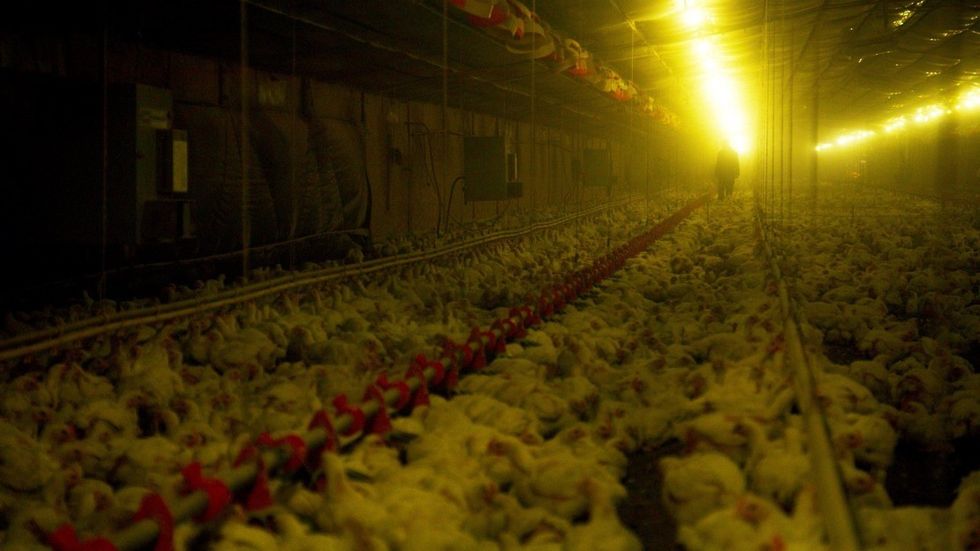
Quinn: No, Jonathan didn’t argue for anything in the book to be kept in the film. In a lot of ways, he’s very respectful of the process. My relationship with Jonathan just happened to be a good one. We got along well, and the discussion moved forward, and there were always good things to add. He put full confidence in whatever my creative vision was, so that was a nice experience.
The same goes for Natalie, in drawing up the narration. At first, the narration plays with pronoun usage—he, she, we—and that was a constant reminder that no matter what you think of the David and Goliath tale of the individual farmer versus the huge corporations, in the end, it’s not going to take overthrowing the government or billions of dollars to make this change—it just comes down to this basic idea that you can change this whole story through what you consume and what you put on your plate. Without whacking people on the head with that, that was something that drove us the whole way through, and that was also a great takeaway from the book for me—and it seems important that that idea makes its way through the entirety of the film.

